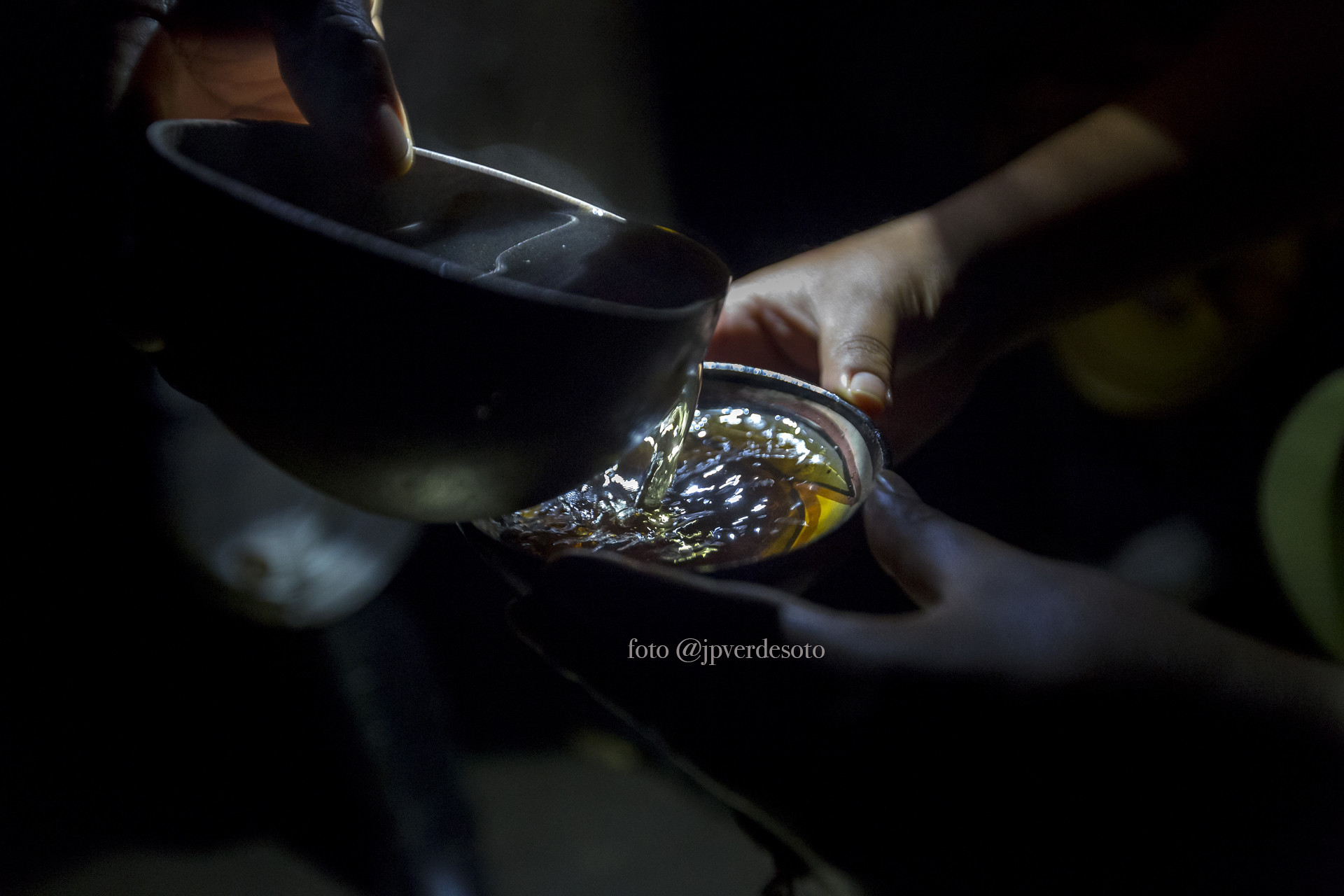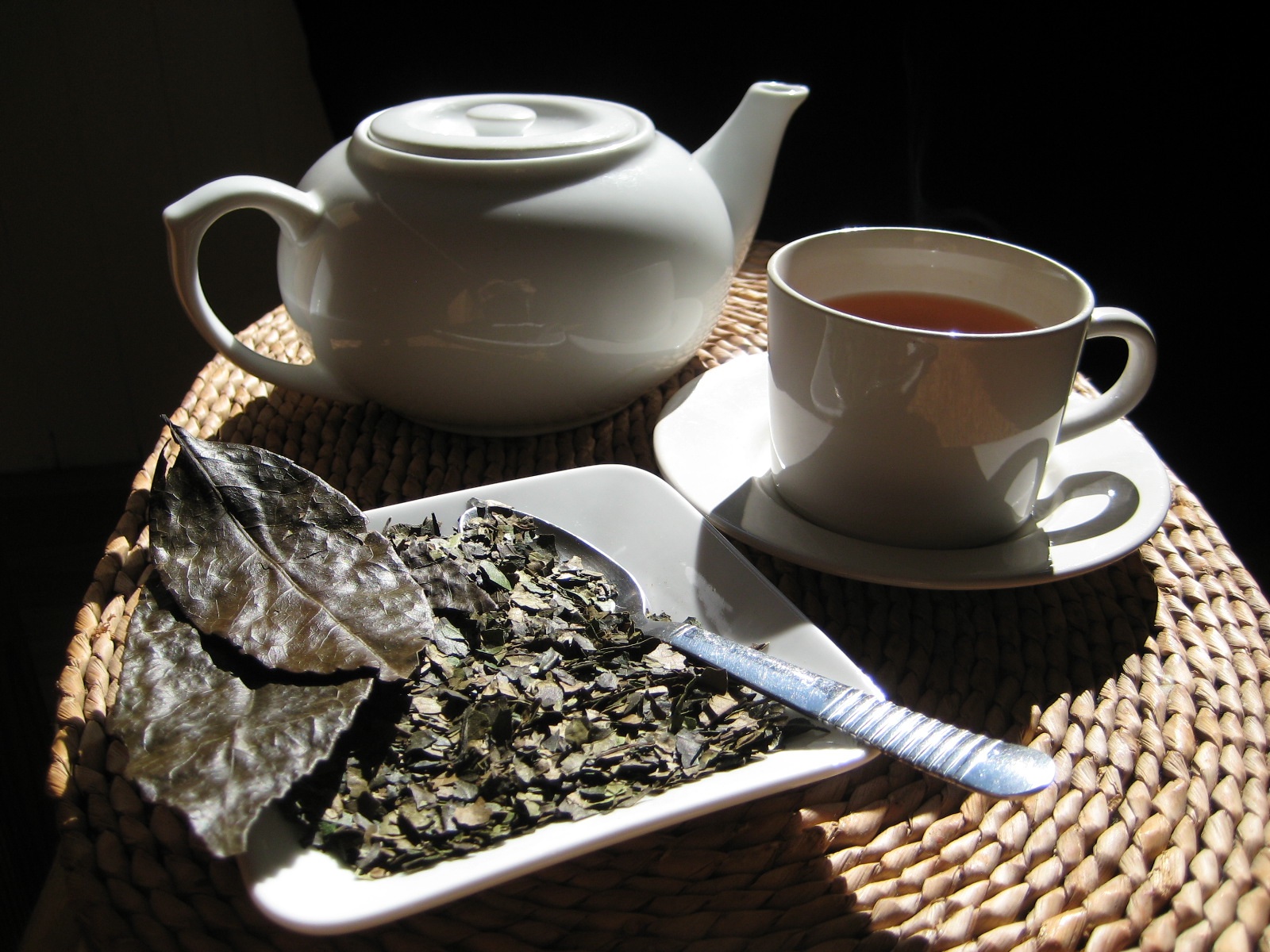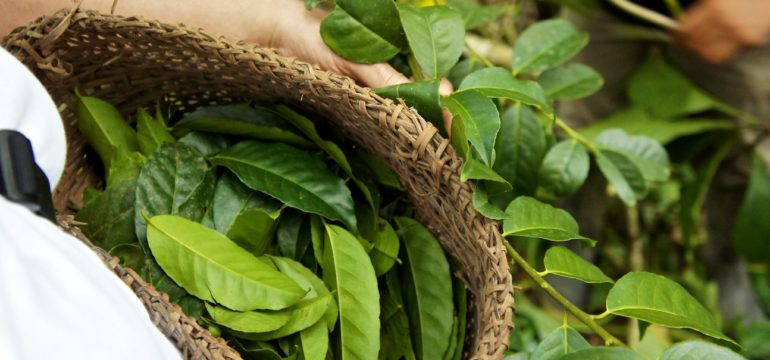By Hafida Mazoud
The Amazon tropical rainforest continues to amaze us with its wonders, most notably an indigenous plant known as Guayusa, which is gaining popularity in the United States and Europe, particularly among those seeking natural energy-boosting beverages. But before delving into the plant’s uses and benefits, I propose first learning about its history and origins.
Guayusa, scientifically known as Ilex Guayusa, is an evergreen tree native to northern Amazonia that is still cultivated in Colombia, Ecuador, and Peru. According to a study led by Dr. Duenas, this plant was used and traded in the upper Amazon region for at least 500 years, and archaeological findings have also revealed that dried leaves of Guayusa were discovered in tombs in Bolivia, implying that it was once common in this region and was even used in its local medicine.

Traditional Preparing (decoction) of Ilex Guayusa drink by Clarissa Wei on Flickr
Ilex Guayusa leaves have traditionally been used in decoction by the Quechua (Kichwa) and Shuar people for their stimulating and toning effect, and it is also part of a holy ritual in which it is used daily before sunrise to bless the natives’ day and give them strength to face a long day of work. Guayusa drink is also consumed during healing ceremonies, in which Amazonian tribes organize a holy gathering during which they stay awake at night dancing or singing to achieve high mental and spiritual acuity, explaining why it is referred to as “the night watchman”. The Quechua tribe attributes the holiness and significance of Ilex Guayusa to a legend in which the tribe’s people prayed for a plant that would help them dream. Those prayers were answered when a Quechua twin saw a vision that led them to heaven’s stairs. They met their ancestors at the top of the stairs, who introduced them to a plant that would allow their people to enter the world of dreams, where they attain enlightenment and wisdom from their elders.

Ritual use of Ilex Guayusa plant by JP Verdesoto on Flickr
This folk tale passed down through generations may have inspired the use of the plant to initiate lucid dreaming and hallucinogenic rituals. It is also still celebrated through a social tradition practised by some Amazonian families, who gather around a fire before sunrise to prepare Guayusa tea while telling each other what they dreamed about the night before, attempting to interpret them and passing on the knowledge gained from these dreams. Guayusa drink is traditionally used as a sign of hospitality and generosity by many communities in Brazil, Ecuador, Colombia, and Peru, in addition to its ritual use, hypnotic and revitalising effects, and a variety of medical applications ranging from scatological and diuretic effects to improving digestion, increasing fertility, treating venereal diseases, and other uses.
Guayusa leaves are traditionally picked, dried, and brewed to make herbal tea, but it is now available in commercialised tea bags as well as a powder that can be added to smoothies or used as an ingredient in energy and herbal beverages. This shift in use and production can also be seen in the cultivation method, as the local population has transitioned from collecting and using wild Guayusa in the Amazonian Forest to cultivating it. Still, the farmers got organized in cooperatives and follow organic and fair-trade practices and standards. Furthermore, Guayusa grows only in the shade of trees, ensuring that the plant is grown in biodiverse agroforestry plots rather than monocultures.

Brewed Ilex Guayusa leaves by Runa on Flickr
Brewed Guayusa has a nutty, earthy and grassy flavour and aroma with a slight bitterness and sweetness, and its caffeine content makes it a good substitute for coffee and tea. It is also high in other alkaloids, such as theophylline and theobromine, which have the same effect as chocolate in terms of uplifting your mood. Guayusa drink can be also an important source of antioxidants, vitamins and amino acids and with you consuming one cup of this beverage, you can benefit from about 17 amino acids such as Aspartic and Glutamic acid, as well as 16 macro and microelements such as Vitamin C, Magnesium and Iron. Although its antioxidant properties are lower than those of tea, it still contains many phenolic compounds such as carotenoids and flavonoids, which vary depending on plant maturity, harvest time and drying techniques.
Studies on the health properties of Guayusa are extremely limited, but a study conducted by Dr. Graham Wise and Dr. Adam Negrin looked at the chemical composition of Guayusa as well as its history of safe use and concluded that it does not appear to pose a higher danger to human health than green tea or yerba mate, but they stressed that more research is needed. Another aspect that scientists should look into is the use of Guayusa in unlocking lucid dreaming, as this may result in less deep and restful sleep and possibly other undiscovered effects.

Ilex Guayusa trees in mixed plant environment by Tom Lisicki on Flickr
Small farmers sell Guayusa in various forms in their local markets on a small scale, although it was a social enterprise that works with over 3000 indigenous families in Ecuador that produced the first large-scale industrial and commercial production of Guayusa beverage. The local farmers are cultivating Guayusa trees in forest gardens, which are then harvested, dried, and used to make an organic biodiversity-friendly energy drink that is exported to the United States and Europe. Despite the fact that Ilex Guayusa is an ancient plant, it was only legal to use and import in Europe and approved as a novel food under EU legislation in 2018, which explains why some of us have never heard of it and why it has not been incorporated into mainstream energetic products.
Now that you know more about Ilex Guayusa’s history and uses, you can try it for yourself and be teleported to the Amazonian rain forests. Its leaves can be used to make hot Guayusa tea or an iced infusion, as well as to add flavour and a distinctive green-orange colour to herby cocktails and mocktails. Guayusa powder is also available on the market and can be used to supplement smoothies and zest sauces and dips. Just keep in mind to select Guayusa that is ethically and sustainably sourced, conserves biodiversity, and improves the livelihoods of local small producers.
References
Dueñas, J. F., Jarrett, C., Cummins, I., & Logan–Hines, E. (2016). Amazonian Guayusa (Ilex guayusa Loes.): A historical and ethnobotanical overview. Economic Botany, 70(1), 85-91.
Radice, M., Cossio, N., & Scalvenzi, L. (2017, January). Ilex Guayusa: A Systematic Review of its traditional uses, chemical constituents, biological activities and biotrade opportunities. In Proceedings of MOL2NET 2016, International Conference on Multidisciplinary Sciences, (Vol. 3868).
Wise, G., & Negrin, A. (2020). A critical review of the composition and history of safe use of guayusa: a stimulant and antioxidant novel food. Critical reviews in food science and nutrition, 60(14), 2393-2404.
Watson, E. (2017) Screw business as usual? RUNA co-founder on clean energy, social innovation, and staying focused. [Online] [Accessed on 14 February 2022] https://www.foodnavigator-usa.com/Article/2017/08/14/RUNA-co-founder-talks-clean-energy-guayusa-Channing-Tatum
 Hafida Mazoud| Linkedin
Hafida Mazoud| Linkedin
SMF Blog Writer
Hafida became interested in food safety and majored in Food Science after experiencing life-threatening food poisoning. She has a Master’s degree in Food Safety and Quality Management as well as a Bachelor’s degree in Food Technologies from the Faculty of Science and Technology in Morocco. She later moved to the United Kingdom, where she pursued a second Master’s degree in Food Science and Innovation from Manchester Metropolitan University.
Hafida’s research focuses on evaluating the influence of sensory attributes such as colour on consumers acceptance of various food products like herbal tea. Hafida is a native Tamazight speaker (North African indigenous language) who also speaks Arabic, English and French. She is eager to write about topics involving food innovation, security and sovereignty.
She is currently a food consultant at the Global Diversity Foundation, where she works with rural food entrepreneurs in the High Atlas region. She is co-founder of Triple E: Educate, Empower, Exchange, an initiative that promotes the right to access information by teaching young Moroccan students how to find and apply for scholarships.
In her spare time, she enjoys spending time with her nephews and niece, going on long walks, playing video games, and cooking while listening to music.






Leave a Reply